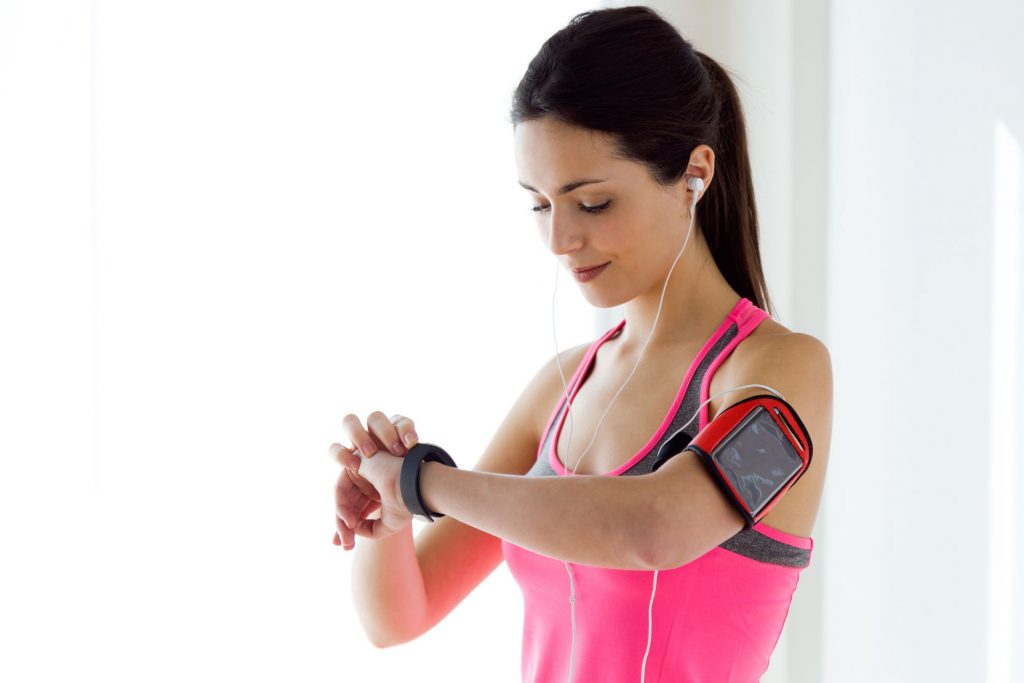Wearable technology is creating new waves of data for doctors and data analysts to study, but it hasn’t always been well received by a demographic representing over half the human population on Earth: women.
Activity trackers, such as Fitbit, started taking off in the early part of the decade as “wearable technology” became a buzzword on par with the “Big Data” it was collecting. But after a few years of sales and profits that comfortably reached into the billions, the San Francisco-based company started to realize it was missing out on female consumers.
In 2015, a study by Saatchi & Saatchi Wellness noted Fitbit’s reliance on male customers, accounting for 70% of the company’s profits. The study also revealed that of the women they spoke to, 95% were aware of wearable technology, but only one third actually purchased it.
The publicly accepted reason for this was that the wearable accessory was not fashionable and that women weren’t embracing wearable tech as part of their wardrobe unless they were working out. According to an article from Wired in 2013, marrying fashion with the function of wearable tech was the key to the success of these devices. But while the fashion forward approach to wearables certainly hasn’t hurt, it’s not the only thing driving their success these days.
The Saatchi & Saatchi study revealed that despite the new “more chic than geek” looks of the devices, women were looking for even more from the technology. One area of contention was understanding the meaning of “wellness.”
Only 12% of the respondents in the study gave physical health as a definition of wellness. Rather, they saw wellness measured in more personal and less measurable terms, such as emotional health, as opposed to body weight or walking distance.
Women’s Health Takes Priority
On an almost parallel timeline, medical devices and their connection to the internet of things developed into an industry capable of revolutionizing the way patient care is delivered. Wearables that mimic skin and transmit health data to mobile devices and medical databases are helping patients become more comfortable with their functionality. In concert with these developments, commercially sold activity and health trackers began incorporating health applications such as sleep and heart rate monitoring into their use with increasing effectiveness.
Now, more devices are being specifically geared toward the female consumer.
One of the most high profile examples comes in the form of fertility tracking. Using thermal sensors that gauge fluctuations in basal body temperature (BBT), apps and accompanying devices help women identify cycles of ovulation more accurately, thus identifying the 48 hour window in which pregnancy is most likely to occur. This can be used as a form of birth control known as Fertility Awareness Monitoring (FAM) or to help women who wish to conceive optimize their efforts to do so.
The Possibilities
But the potential for these devices goes beyond tracking fertility. Temperature monitoring alone can provide data which could help with the diagnosis of thyroid disorders or detect the presence of tumors.
Can data collected from these devices yield insight into conditions such as endometriosis or polycystic ovarian syndrome, which often go undiagnosed? Can other issues experienced by women, such as premenstrual syndrome or urine loss, also be looked at closer through data collected via wearables?
Many think so, and some even believe that fashion itself will become smart technology capable of improving our overall health. Sports bras capable of monitoring respiratory responses and clothing capable of applying “vibration, massage and pressure to treat nausea and anxiety” are just a few possibilities we could see the coming decades, according to an article from Vox Media’s retail focused website Racked.
Back to the Present
Currently, apps are in advanced development that claim to target and block PMS pain signals’ path to the brain. The method of delivery comes in the form of a wearable device at the site of the pain which “closes the pain gates” by stimulating surrounding nerves and blocking the signal from passing to the brain.
Devices that collect data for pregnant mothers could provide real time fetal monitoring as well as contraction measurements in the third trimester, thus helping expectant mothers avoid unnecessary trips to the hospital. New mothers can benefit from apps that monitor breast milk production.
Another notable development includes devices dedicated to women’s safety. They may pose as a piece of jewelry that activates a distress signal which texts loved ones if it’s held for more than a few seconds. Another is nothing more than a sensor that sticks to any piece of clothing and can detect when that piece of clothing is being forcibly removed, causing it to send a text message to the user’s phone that if not responded to within a short period of time, a distress message is sent to five chosen family members or friends.
Safety devices such as these could help curb, or at least aide in the prosecution of campus assaults, child and elderly abuse cases as well as other sexual assault scenarios. These devices offer additional value in that they require no input from the user, thus benefiting those who are bedridden or severely intoxicated.
The Female Tech Revolution
The development of female driven tech is, perhaps not coincidentally, happening at a time where longstanding efforts to involve more women in tech development are starting to come to fruition.
STEM careers, generally speaking, have come under fire in recent years for being male dominated and certainly health IT has been no different. Efforts to get more women involved in STEM-related fields have gone as far as the federal government passing legislation to non-profits teaching girls computer coding.
In the health IT sector, efforts have increased to attract female innovators and leaders. One effort that has taken shape in the United Kingdom and Europe, known as Women of Wearables (WoW), aims to “inspire, support and connect women in wearable tech, fashion tech, IoT and virtual/augmented reality.”
In 2016, WoW’s founder, Maria Butkovic, had this to say in a piece penned for iotUK:
“It’s important when developing a wearable product to make the technology invisible to the user. I believe every company developing wearables should have at least one female designer to add a different perspective about what other women will want to wear.”
Women in Healthcare Leadership
At the same time, there has been a growing sentiment that more female leaders are needed in healthcare. According to a 2017 study from LinkedIn, 62% of the healthcare workforce was female, but only 49% of healthcare leadership positions were filled by women, a gap that is sizably smaller than it was in 2008.
The shift in healthcare IT is beginning to take shape as well. In a 2016 interview with Health Data Management, Tina Espito, Vice President of Health Information Services noted a rising tide of female leaders in healthcare IT, but believes that more can be done to educate females at a younger age, encouraging them to pursue healthcare IT careers and “ensure that there are enough opportunities for females” in male dominated STEM fields.
With females finding positions of power in health IT at the same time as wearables proliferate, the market for wearables engineered by women, for women, seems primed for an explosion of growth and innovation.




